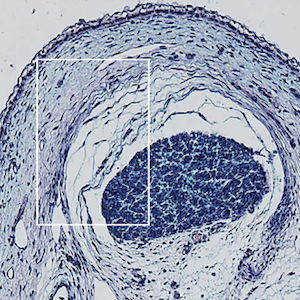Peripheral neuropathy in antiphospholipid syndrome: a systematic review

All claims expressed in this article are solely those of the authors and do not necessarily represent those of their affiliated organizations, or those of the publisher, the editors and the reviewers. Any product that may be evaluated in this article or claim that may be made by its manufacturer is not guaranteed or endorsed by the publisher.
Authors
Objective. Antiphospholipid syndrome (APS) is a disease characterized by recurrent thrombosis in the presence of antiphospholipid antibodies. The most uncommon events described in the literature have been peripheral neurological disorders. This paper aims to systematically review the cases of peripheral neuropathy (PN) in APS patients.
Methods. We systematically searched articles on PN and APS with English abstracts in PubMed from 1966 to August 2022.
Results. We found 10 articles on PN and APS with 100 patients. Age varied from 25 to 78 years; 86-100% of patients in these studies were female. Most patients had primary APS (n=9); one article considered secondary APS associated with other autoimmune diseases. Disease duration varied from 0 to 8.6 years, but three articles did not provide this information. Most studies showed positivity for anticardiolipin antibodies (n=5), followed by lupus anticoagulant (n=2). Regarding clinical NP features, mononeuritis multiplex (n=3) and autonomic neuropathy (n=3) were more common than peripheral polyneuropathy (n=2). Nerve biopsy was performed in 7 articles and resulted positive in all cases. Concerning treatment, most articles used anticoagulation (n=4), followed by glucocorticoids (n=3), intravenous immunoglobulin, and immunosuppressive drugs (n=1). Most cases improved after treatment (n=7).
Conclusions. This study demonstrates that PN is a rare complication in APS and occurs more frequently in females, associated with antiphospholipid antibody positivity. Most cases were confirmed by electroneurography or nerve biopsy and had a good outcome.

This work is licensed under a Creative Commons Attribution-NonCommercial 4.0 International License.
PAGEPress has chosen to apply the Creative Commons Attribution NonCommercial 4.0 International License (CC BY-NC 4.0) to all manuscripts to be published.










